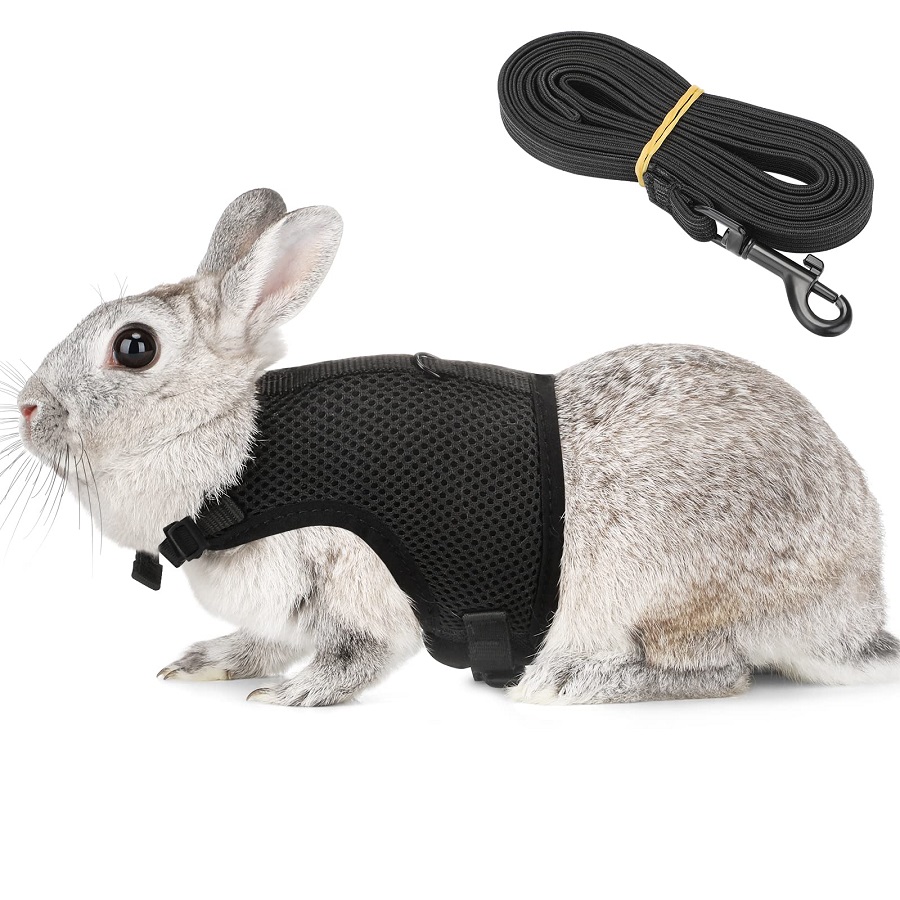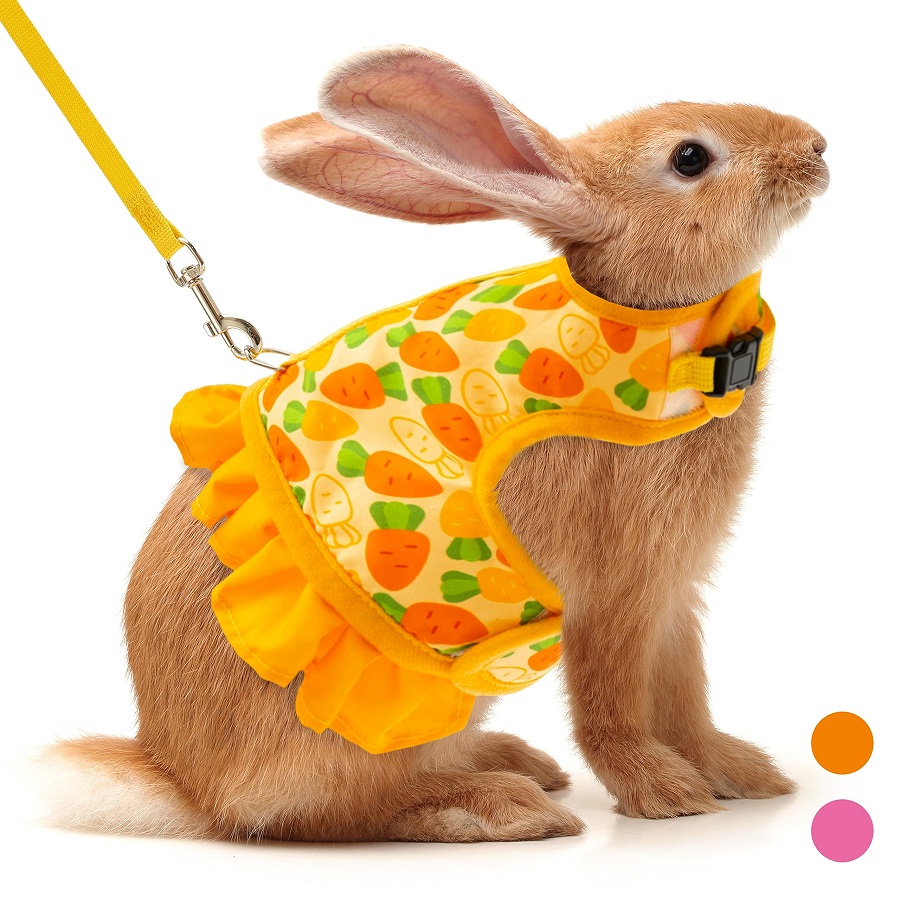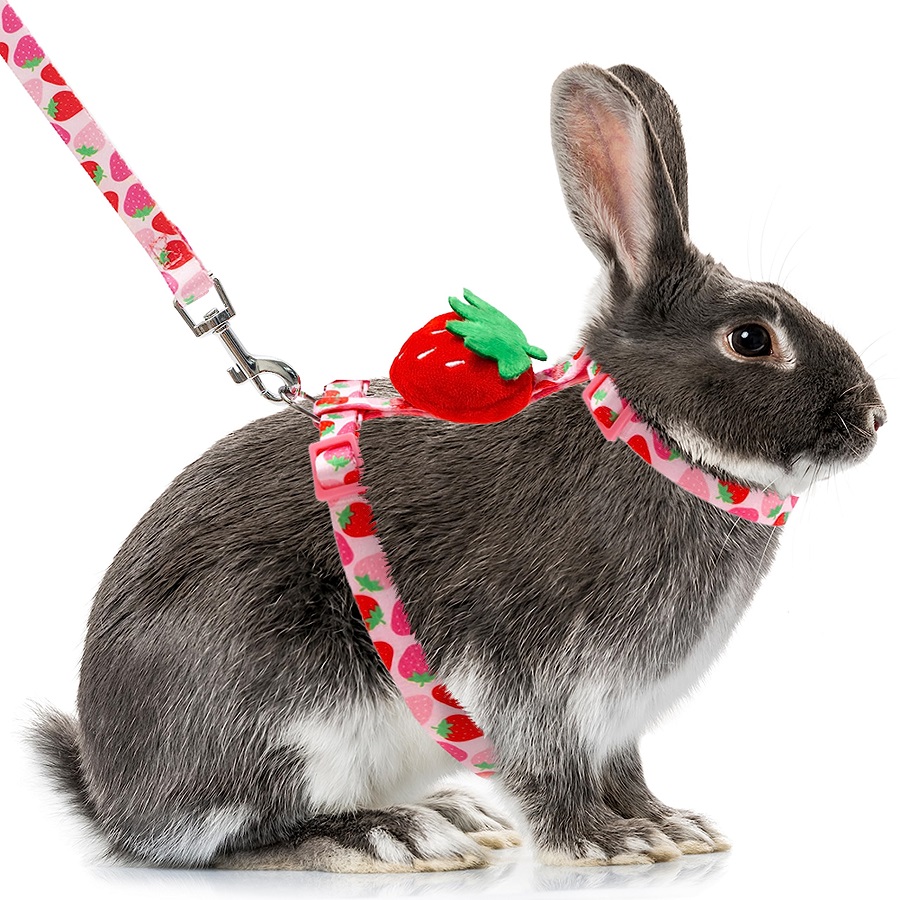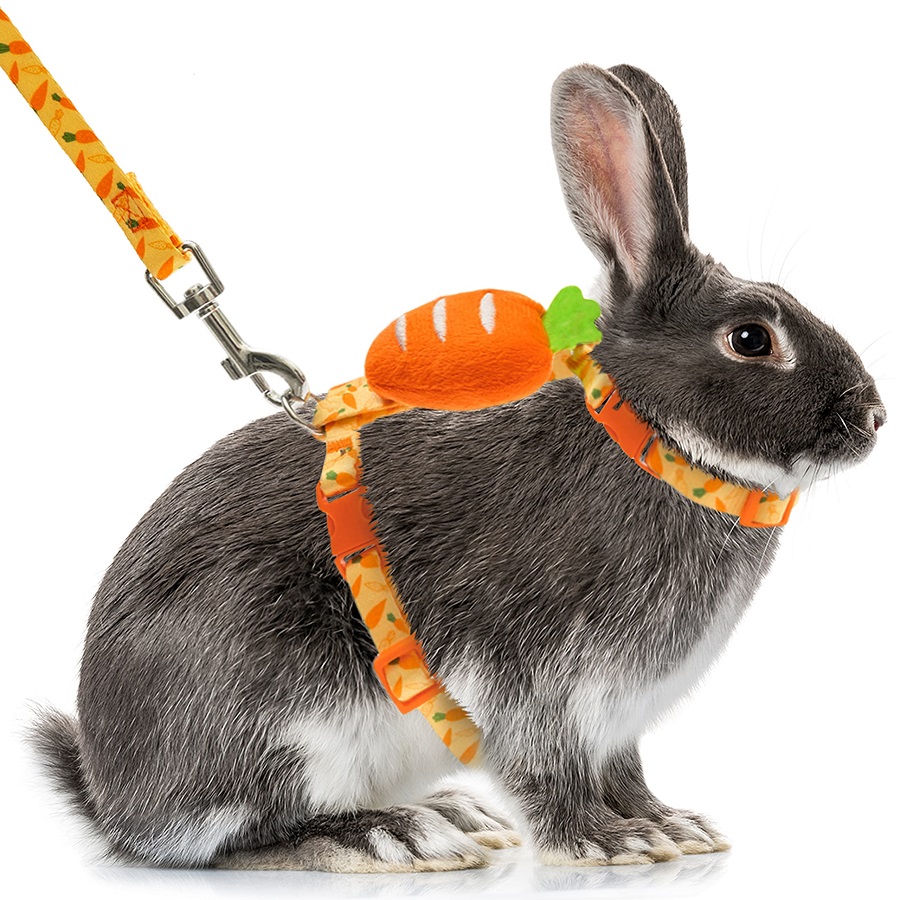Introduction to Walking Rabbits on Leashes
Walking rabbits on leashes is a delightful and rewarding experience for both pet owners and their furry companions. While it may seem unconventional, more people are discovering the joys of leash training their rabbits. Unlike traditional pets such as dogs or cats, rabbits require specific considerations when it comes to outdoor adventures. This guide will provide you with all the necessary information to safely and effectively walk your rabbit on a leash, ensuring a fun outing for both of you.
Understanding Your Rabbit’s Nature
The Social Behavior of Rabbits
Rabbits are social animals that thrive on interaction, both with humans and other rabbits. In their natural habitat, they live in groups and exhibit communal behaviors. When considering walking your rabbit, it’s essential to understand their social nature. A well-socialized rabbit will be more receptive to leash training, while a timid or unsocialized rabbit may require additional patience and gradual introduction to the concept of being outdoors on a leash.
Many rabbits enjoy exploring new environments and meeting new people. However, just like any other pet, each rabbit has its personality. Some may be adventurous and curious, while others might be shy or nervous. Observing your rabbit’s behavior at home can help determine how open they will be to outdoor experiences. It’s crucial to acclimate them to various surroundings gradually, ensuring they feel safe and secure during their excursions.
Recognizing Stress Signals
Before embarking on leash walks, it’s important to recognize signs of stress in your rabbit. Common indicators include flattening ears, rapid breathing, thumping, and hiding. If your rabbit shows these signs, it may be best to return indoors or give them time to calm down before trying again. Understanding your rabbit’s body language will not only enhance your bond but also ensure that your outdoor adventures are enjoyable for both of you.

Choosing the Right Equipment
Selecting a Suitable Harness
When it comes to walking your rabbit, selecting the right harness is crucial. Unlike dog harnesses, which are designed for different sizes and breeds, rabbit harnesses need to be lightweight and escape-proof. Look for a harness specifically designed for rabbits, as it should fit snugly without restricting movement. A well-fitted harness will allow your rabbit to hop and explore comfortably while keeping them secure.
There are various types of harnesses available, including those made from soft nylon and those with adjustable straps. A harness with a vest-style design is often recommended, as it distributes pressure evenly across your rabbit’s body. Before making a purchase, measure your rabbit’s chest and neck to ensure a proper fit. Remember that a good harness should allow for some wiggle room, but not so much that your rabbit can easily slip out.
Finding the Right Leash
Along with the harness, choosing the appropriate leash is essential for your rabbit’s safety. Opt for a lightweight, durable leash that allows for freedom of movement without being too long. A 4 to 6-foot leash is generally ideal for rabbits, as it provides enough length for exploration while allowing you to maintain control. Avoid using retractable leashes, as they can be challenging to manage when walking small animals like rabbits.
Preparing Your Rabbit for Leash Training
Gradual Acclimatization
Before heading outside, it’s important to acclimate your rabbit to the harness and leash indoors. Begin by letting your rabbit sniff and explore the harness without forcing it on them. Once they seem comfortable, gently place the harness on your rabbit for short periods, gradually extending the duration. Use treats and positive reinforcement to create a positive association with the harness.
After your rabbit is comfortable wearing the harness, it’s time to introduce the leash. Attach the leash to the harness while still indoors, allowing your rabbit to move freely. Monitor their behavior closely during this period; if they appear distressed, remove the leash and try again later. By taking these gradual steps, you’ll build your rabbit’s confidence and familiarity with the equipment.
Short Indoor Sessions
Once your rabbit is comfortable with the harness and leash, practice short indoor sessions. Take your rabbit for gentle walks around your home, allowing them to get used to the sensation of being led. Be mindful of their pace and follow their lead; if they want to stop and explore, let them. These indoor practice sessions will strengthen your bond and prepare your rabbit for outdoor adventures.
During these sessions, encourage your rabbit with treats and praise. This positive reinforcement will help them associate leash walking with enjoyable experiences. As your rabbit becomes more accustomed to being on a leash, you can gradually increase the length of these sessions, reinforcing their confidence and comfort level.

Choosing the Right Environment for Walks
Safe Outdoor Spaces
Selecting the right environment for your rabbit’s leash walks is crucial for their safety and enjoyment. Start with quiet, enclosed areas where your rabbit can explore without the stress of loud noises or large crowds. Parks with designated walking paths or quiet backyards are excellent options. Ensure that the area is free from potential dangers such as heavy traffic, aggressive dogs, or toxic plants.
Once your rabbit has become more accustomed to leash walking, you can gradually introduce them to new environments. Always observe their body language and comfort levels in these new settings. If your rabbit seems anxious or overwhelmed, it may be best to retreat to a familiar area. Remember, your goal is to provide a safe and enjoyable experience for your pet.
Weather Considerations
Weather conditions also play a significant role in how enjoyable your walks will be. Rabbits are sensitive to extreme temperatures, so avoid walking them in very hot or cold weather. Ideal walking conditions are mild, dry days. Hot pavement can burn your rabbit’s feet, so take care to choose grassy or shaded areas for walks during warmer months. Conversely, on colder days, ensure that your rabbit is kept warm and protected from harsh winds.
Training Tips for Successful Walks
Basic Commands
Before hitting the trail, teaching your rabbit basic commands can enhance your walking experience. Simple commands such as “come,” “stop,” and “stay” can help you communicate with your rabbit more effectively. Use treats to reinforce these commands during your indoor training sessions. Consistency is key; practice these commands frequently to ensure your rabbit understands what you expect from them during walks.
When you’re ready to practice these commands outside, bring plenty of treats to reward your rabbit for following your cues. Positive reinforcement will encourage them to respond to your commands, making your walks more enjoyable and manageable. It also helps establish trust between you and your rabbit, creating a stronger bond.
Patience and Persistence
Leash training a rabbit takes time, patience, and persistence. Some rabbits may take to leash walking quickly, while others may require more time to adjust. Don’t rush the process; instead, focus on creating positive experiences for your rabbit. If they seem hesitant to walk, allow them to explore at their own pace. Offering encouragement and treats can help motivate them to venture further.
If your rabbit becomes scared or pulls away, take a step back. Rushing them into situations that make them uncomfortable can lead to negative associations with leash walking. Remain calm, and give your rabbit the space they need to feel secure. With patience and continued practice, your rabbit will eventually become more confident and willing to explore the world around them.

Safety Precautions to Consider
Keeping an Eye on Surroundings
Safety should always be a top priority when walking your rabbit. Constantly monitor your surroundings to identify potential hazards, such as other pets, loud noises, or unfamiliar objects. If you notice something that could startle your rabbit, steer them away from it. Being aware of your environment will help prevent accidents and ensure a smooth walking experience.
Emergency Preparedness
Even with careful planning, emergencies can happen. Always carry a basic pet first aid kit when walking your rabbit. Include items such as antiseptic wipes, bandages, and any medications your rabbit may need. Familiarize yourself with local veterinary clinics in case of an emergency, ensuring you know where to go should your rabbit require medical attention.
Furthermore, having a plan in place for sudden weather changes is essential. If a storm rolls in unexpectedly, find shelter immediately. Knowing how to react in emergencies will keep both you and your rabbit safe during your outdoor adventures.
Enriching Your Rabbit’s Experience
Exploring New Terrains
Walking your rabbit on a leash can be a fantastic way to enrich their life and introduce them to new experiences. Allowing your rabbit to explore different terrains, such as grass, dirt paths, and even sand, can stimulate their senses and provide mental enrichment. Each new texture and smell contributes to their overall well-being, keeping them happy and engaged.
Socialization Opportunities
Leash walking provides excellent socialization opportunities for your rabbit. Meeting new people and other animals can help reduce fear and anxiety, making your rabbit more adaptable to various situations. Encourage gentle interactions by allowing people to approach and offer your rabbit treats, always ensuring that your pet feels comfortable.
Conclusion: Enjoying Adventures Together
Walking your rabbit on a leash can be a joyous and fulfilling experience for both pet owners and their furry friends. By understanding your rabbit’s nature, choosing the right equipment, and following proper training techniques, you can create memorable outdoor adventures together. Remember that patience is key; each rabbit is unique and will progress at their own pace.










